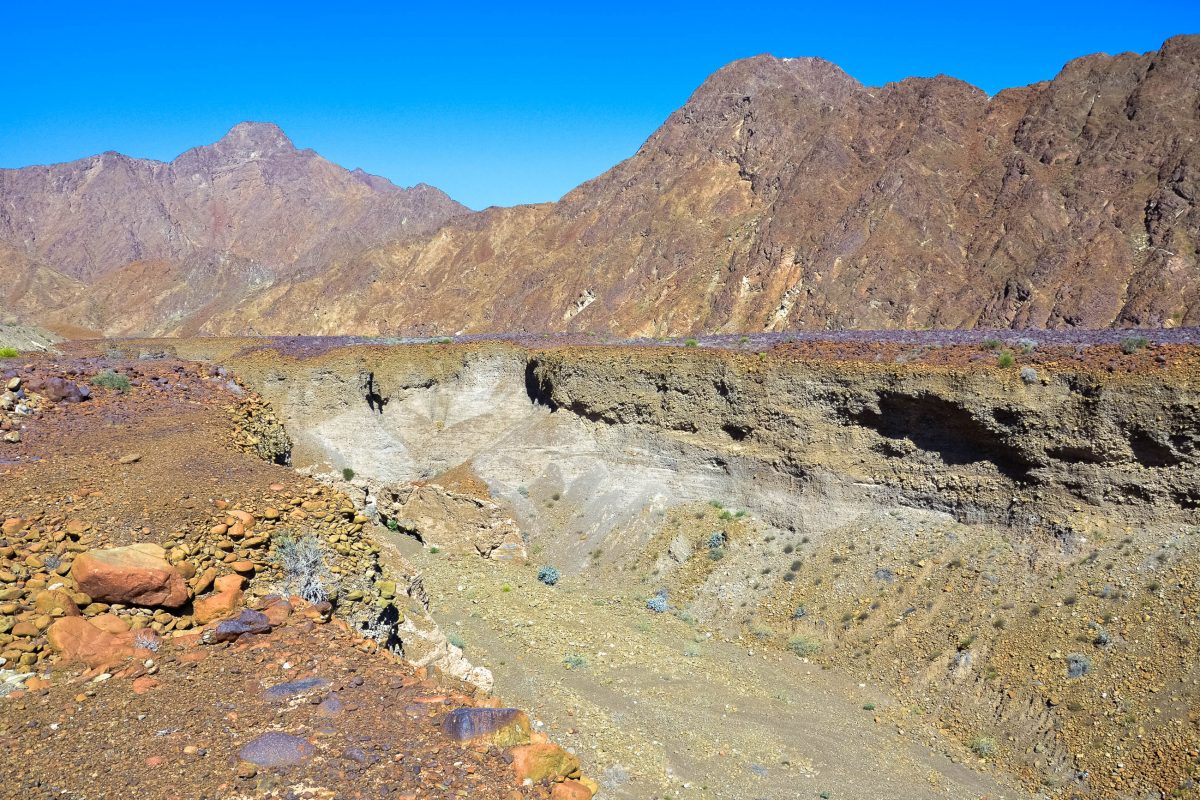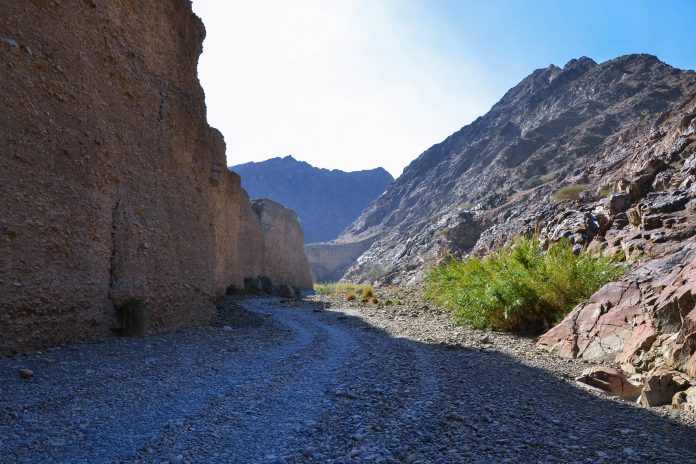Das Wadi Wurayah im Emirat Fujairah kann mit einer Sensation aufwarten: einem Wasserfall mitten in der Wüste. Sein Flussbett und die steilen Felswände des malerischen Wadis locken nicht nur Tiere ans kühle Nass.
Das Wadi Wurayah im Norden von Fujairah, einem Emirat der VAE, zählt zu den wenigen dauerhaften Wasserquellen, die die Vereinigten Arabischen Emirate zu bieten haben. Obwohl im Sommer die Temperaturen zwischen den fast senkrechten Felswänden auf bis zu 50°C steigen, reicht die Niederschlagsmenge im kühleren Winter aus, um die Wasserstellen für das ganze Jahr zu füllen.
So entsteht auch das einzigartige Phänomen eines nicht austrocknenden Wasserfalls mitten in der Wüste – und damit ein Eintrag auf unserer Liste der Top 10 Sehenswürdigkeiten der Vereinigten Arabischen Emirate. Die UNESCO erklärt das Wadi Wurayah zum Biospähren-Reservat.
Inhaltsverzeichnis
BILDER: Wadi Wurayah in Fujairah
Fotogalerie: Wadi Wurayah in Fujairah
Anfahrt zum Wadi Wurayah
Etwa 5km nach Khor Fakkan zweigt von der Hauptstraße nach Dibba eine geteerte Straße ab, die bis ins Wadi Wurayah führt. Die Straße endet nach knapp 11 Kilometern oberhalb des Wadis, von wo man schon den Wasserfall rauschen hört, den man nach einigen hundert Metern zu Fuß erreichen kann. Ein steiler Weg führt bis ins Flussbett hinab.
Unterwegs im Wadi Wurayah

Die steil aufragenden Wände des Wadis, die am Ufer des Flusses empor streben, laden zu Wanderungen ein und mit dem Geländewagen kann das Wadi ebenfalls noch weiter erkundet werden.
Trotz der kargen Lebensbedingungen ist das Wadi Wurayah von Tieren bevölkert, die vor allem auf der Suche nach Wasser hierher kommen. Und so sind im Wadi einige der seltensten Tiere der Arabischen Welt zu finden, wie zum Beispiel der Arabische Tahr, ein zotteliges, ziegenähnliches Huftier, der Wüstenluchs, die Arabische Berggazelle oder der Arabische Leopard.
Neben den Säugetieren leben auch 75 Vogel- und 17 Reptilienarten im Wadi Wurayah. Von den Süßwasservorräten des Wadis leben außerdem an die 300 Pflanzenarten, von hochgewachsenen, schattenspendenden Akazien bis hin zu niedrigen Büschen. Für die Bestäubung sorgen unter anderem Schmetterlinge, von denen im Wadi immer noch neue Arten entdeckt werden.
Wadi Wurayah Schutzgebiet

Die Schönheit und Idylle des Wadis hat sich nicht nur bei den Einheimischen, sondern auch bei den Touristen rasch herumgesprochen, die das traumhafte Tal zunehmend zu ihren Ausflugszielen zählten. Die Tiere, die ins Wadi kamen, um zu trinken, fühlten sich durch die vielen Besucher gestört, die sich neben Lärmbelästigung auch noch der Umweltverschmutzung und sogar der Wilderei schuldig machten.
Scheich Hama ibn Muhammad asch-Scharqi sah hier Handlungsbedarf und stellte das Wadi und insgesamt 129 Quadratkilometer in seiner Umgebung unter Schutz. Am 16. März 2009 entstand somit das erste Gebirgsschutzgebiet der Vereinigten Arabischen Emirate.
Schließung des Schutzgebietes im Dezember 2013

Im Dezember 2013 wurde die Straße, die ins Wadi führt, gesperrt. Die Auswirkungen des Tourismus waren trotz der Schutzmaßnahmen für das Ökosystem des Wadis nicht länger tragbar. Pflanzen wurden beschädigt, Müll von Campern zurückgelassen, Felsen mit Graffiti besprüht und sogar Tiere getötet.
Seit 2018 steht es als UNESCO Biosphären-Reservat unter strengstem Schutz und kann mittlerweile auch wieder besichtigt werden.
Weiterführende Links:





